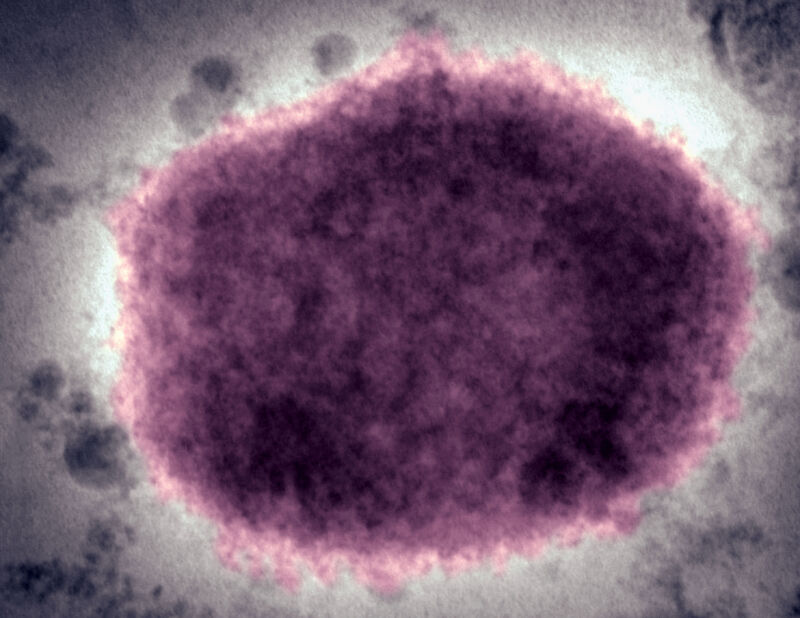
The US Centers for Disease Control and Prevention today provided an update on the monkeypox situation in the US, which is connected to a growing multinational outbreak. It also used the time to address open questions and calm some unfounded fears.
To date, there are five confirmed and probable cases in the US. The one confirmed case of monkeypox in the US was identified last week in a Massachusetts man who had recently traveled to Canada. The four probable cases include one in New York City, one in Florida, and two in Utah.
Those four cases are probable because they all tested positive for an orthopoxvirus, the family of viruses that includes monkeypox and smallpox. They are considered presumptive monkeypox cases and are being treated as such while the CDC carries out secondary testing to confirm monkeypox.
All five confirmed and probable cases in the US are in men, and all have a history of international travel that fits with the multinational outbreak.
The CDC also used today's briefing to highlight that it had sequenced the genome of the monkeypox virus from the initial Massachusetts case. The genetic sequence closely matches that of a case in Portugal.
Globally, there are nearly 250 confirmed and suspected cases from 17 countries, most of which are in Europe. Roughly 165 cases are confirmed, and 83 are suspected (you can track the growing tally here and here). The cases are predominately in men and, specifically, in men who identify as gay, bisexual, or are men who have sex with men (MSM).
This is an unusual outbreak that health officials worldwide say requires prompt attention and swift action. However, the risk to the general population is still considered low.
"This is not an easily transmissible virus through respiratory droplets and things like that," Capt. Jennifer McQuiston, deputy director of the CDC's Division of High Consequence, said in today's briefing.
"This is not COVID," she added. "We do know a lot about monkeypox from many decades of studying it, and respiratory spread is not the predominant worry. It is contact—and intimate contact—in the current outbreak setting and population. And that's really what we wanted to emphasize."
Below is a quick rundown of critical questions and answers:
What is monkeypox virus?
Monkeypox is a DNA virus related to smallpox that infects animals and is endemic to forested areas of Central and West Africa. It's unclear what animal or animals act as a reservoir for monkeypox, but rodents are the prime suspects. The virus can also infect rats, squirrels, prairie dogs, different monkey species, and other animals.
It got its name when researchers initially discovered the virus in monkeys in a Danish laboratory in 1958, according to the World Health Organization. The first human case was identified in a child in the Democratic Republic of the Congo in 1970.
People are largely thought to become infected by hunting and handling wild animals and bush meat.
There are two clades of monkeypox: The West African clade and the Congo Basin clade. The West African clade is the milder of the two, with an estimated case fatality rate in humans of around 1 percent. The Congo Basin clade has an estimated fatality rate of up to 10 percent.
Which clade is causing the current outbreak?
The West African clade, the milder one.
What are the symptoms?
Once infected, a person typically develops symptoms five to 13 days after exposure, but the incubation period can range from five to 21 days.
Monkeypox usually begins with fever and flu-like symptoms, specifically headache, fatigue, muscle aches, and swollen lymph nodes. One to three days later, skin lesions develop all over the body (a tell-tale rash) but tend to concentrate on the face and extremities, particularly the palms of the hands and soles of the feet. The lesions start flat at the base and then become raised and filled with fluid. A crusty scab then forms over each lesion and later falls off. The number of lesions an infected person develops can range from a few to several thousand, according to WHO.
The illness generally lasts for two to four weeks and clears up without any specific treatments.


3175x175(CURRENT).thumb.jpg.b05acc060982b36f5891ba728e6d953c.jpg)

Recommended Comments
There are no comments to display.
Join the conversation
You can post now and register later. If you have an account, sign in now to post with your account.
Note: Your post will require moderator approval before it will be visible.